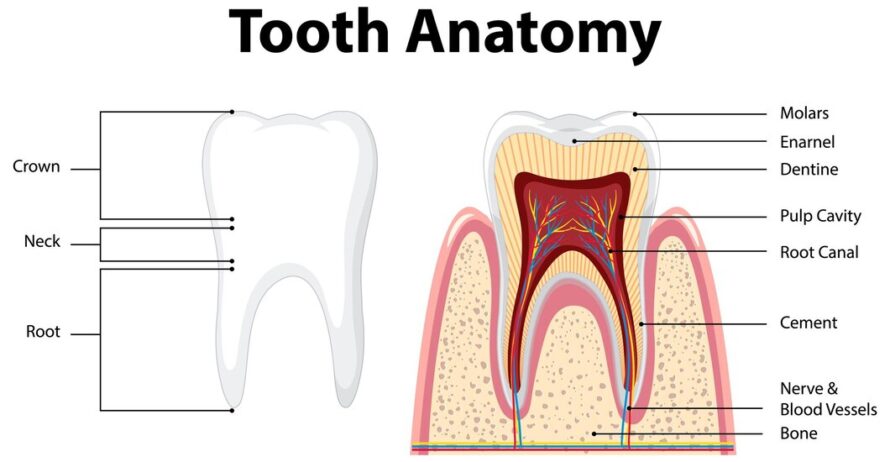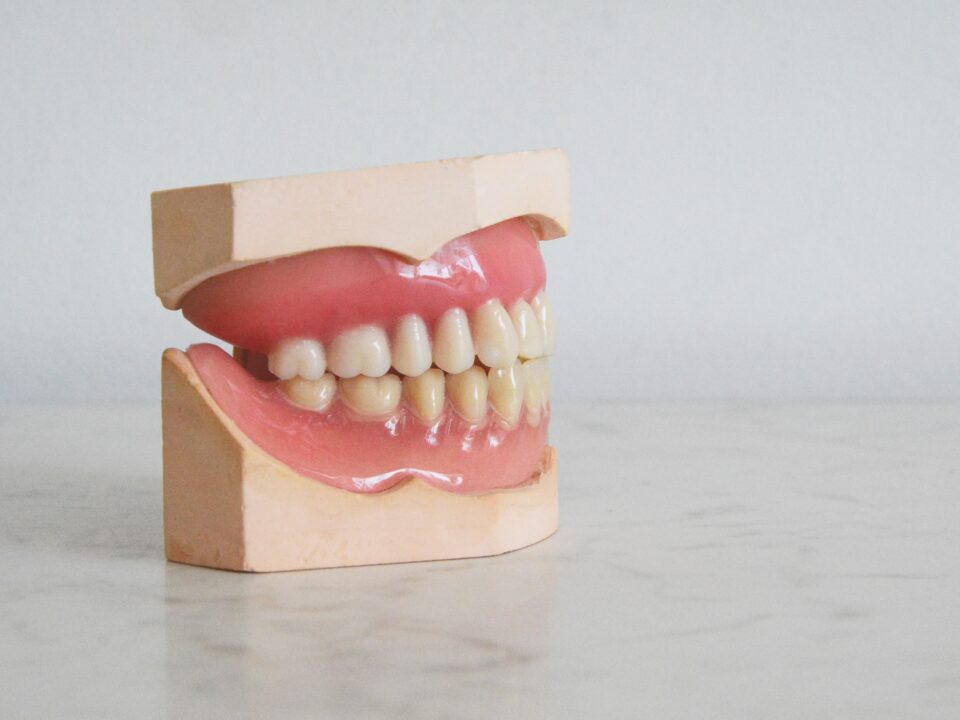
A No-Frills (and No-Drills) Rundown of Laser Dentistry
July 26, 2024Dental specialties abound, but chances are you’ll see two types for thorough oral care: periodontists and endodontists. How they differ from a general dentist might be confusing, but we’re happy to clear up the matter.
Let’s delve into what endodontists and periodontists do for your dental health.
[Related: A No-Frills (and No-Drills) Rundown of Laser Dentistry]
Endodontist vs. Periodontist: Key Roles
Here’s the root of the matter:
- Endodontists treat the inside of your teeth — the roots and pulp.
- Periodontists treat around your teeth — the gums and surrounding bone.
Both dental specialist types are highly skilled health professionals who have years of medical training. Their expertise ensures you receive targeted dental care, and they often work together for holistic oral health.
Note. Your general dentist may also be an endodontist or a periodontist. It depends on whether they’ve earned those specific credentials.
[Related: Your Guide to Endodontic CT Scans]
Endodontists’ Specialties
Your endodontist is a root canal specialist, but their abilities don’t end with root canal treatment. Endodontic care aims to relieve pain, clear infection and save your natural teeth so that you don’t need extraction.
And their skills are invaluable to your dental health. The pulp inside your teeth is highly susceptible to pain and temperature when infected or exposed. Beyond root canal therapy, these are primary endodontic procedures.
Apicoectomy
You may have heard the terms “root-end surgery” or “root-end resection” — these refer to an apicoectomy.
During an apicoectomy, your endodontist removes the tip of a root that’s grown infected, as well as any leftover decay. The procedure is a bit more delicate than root canal treatment, requiring surgical expertise in treating the tiny root tip.
Root Amputation
A root amputation procedure is also called a “root resection.” Your endodontist removes a damaged root from a multirooted tooth, usually a molar, after a root canal. You might opt for root amputation when the root decays, fractures or has significant bone loss.
Root amputation is a form of endodontic surgery. It requires an incision to expose and extract a single root, leaving the remaining healthy roots to support your tooth.
Root Canal Retreatment
Sometimes root canal-treated teeth become reinfected or fractured, so root canal retreatment is necessary. Even the best root canal procedures can go awry after you go home!
An endodontist removes the old filling, adds new filling materials and reseals your tooth. Endodontic retreatment gives you a way to save your natural tooth. This procedure requires precision — your endodontist’s years of dental school training are invaluable.
Endodontist vs. Periodontist: Endodontic Takeaways
An experienced endodontist, treating the super-sensitive tooth pulp, is a key player in your oral health. In short, any condition affecting your tooth roots and pulp falls into an endodontist’s hands. They also treat cracked teeth and perform emergency root canals.
Don’t hesitate when you’re in pain! Endodontists take great strides and use sedation to ease and eliminate pain during procedures.
[Related: Endodontic Surgery: Root Amputation vs. Apicoectomy]

Here’s a look at the outside and inside of your teeth (via Freepik).
Periodontists’ Specialties
Your periodontist focuses on treating gum disease (periodontal disease) and the bone it affects. From regular dental cleanings to surgeries, they’re experts in helping you prevent tooth loss and maintain excellent oral health.
Their goal is to meticulously treat your gum health so that extraction is a last resort. But if a tooth happens to require extraction, periodontists usually handle it. These are a periodontist’s main procedures.
Scaling and Root Planing
Periodontists remove plaque and tartar buildup from your tooth’s surface and below the gum line during scaling and root planing. You may have heard it as a “deep cleaning,” and it’s nonsurgical.
This procedure is first-line treatment for gum disease in mild and moderate cases. It reduces gum inflammation and promotes healing. As a result, you don’t have to undergo more invasive periodontal procedures.
Gum Surgery
Your periodontist treats advanced gum disease with gum surgery, aka periodontal surgery. They use techniques like gum flap surgery and gum grafting.
Gum flap surgery, also known as gingival flap surgery or pocket reduction surgery,, involves lifting the gum tissue to expose a tooth’s roots. Then, your periodontist painstakingly cleans and removes tartar and plaque.
Gum grafts (gingival grafts) involve periodontists taking tissue from one part of your mouth or from a donor source. They then attach that tissue to an affected area (like receding gums) to help your mouth heal.
Dental Implants
Periodontists perform dental implants when you need to replace missing teeth. The exact dental implant process differs according to your situation, but these are the standard steps your endodontist takes:
- Surgically places the implant in your jawbone
- Gives your mouth time to heal
- Attaches an abutment
- Places a crown, denture or bridge
No one wants to lose teeth, but periodontists make your new smile bright and long-lasting with dental implants.
[Related: Periodontal Disease and Cardiovascular Health]
Periodontist vs. Endodontist: Periodontal Takeaways
Periodontists are gum geniuses, treating your mouth via both deep cleanings and surgical interventions. Their dental school training gives them extensive knowledge of gum disease, its stages and what procedure you should undergo.
They can also perform cosmetic procedures, such as gum contouring. Like your endodontist, a periodontist uses sedation to reduce or eliminate pain during periodontal procedures.
[Related: Gum Bleaching, Whitening and Lightening: What You Need To Know]
Meet Cascadia Dental Specialists’ Endodontist and Periodontists
We have the best of both worlds at Cascadia Dental! Our doctors are two periodontists, Dr. Albather and Dr. Sengupta, and an endodontist, Dr. Faghih. Each one uses the latest dental care technology to treat your teeth — inside and out.
Book an appointment today, or contact us to learn more about our clinic’s services.
- Discover what to expect when you visit, download a referral form and explore our insurance and payment plans.
Featured image via Freepik





